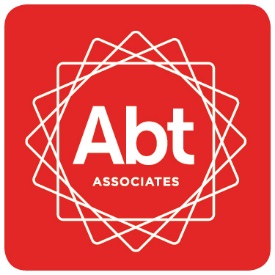Attachment
1, Exhibit A4. The sample size for the number of REL Director
interviews is listed as 19; there are only 10 RELs, and one is in
the pilot, so this appears to be a typo, with 19 entered instead
of 9.
|
Budget
Services
|
The
study team corrected Attachment 1, Exhibit A4. There are 10 RELs,
and none were in the pilot. The burden estimate was correct: The
study team did not pilot the REL Director interview protocol so
the number of REL interviews should be 10.
|
Attachment
2, page 3. The document says that Congress requires a “periodic
evaluation” of the CC program. It actually requires an
ongoing evaluation. (See Section 204 of the statute.)
|
Budget
Services
|
The
study team replaced “periodic evaluation” with
“ongoing evaluation” to align to the statutory
language.
|
Revise
the proposed instruments to enumerate “lesbian, gay,
bisexual, transgender, queer, nonbinary, and intersex (LGBTQ+)
students” among examples of “Diverse Learners.”
|
GLSEN
|
The
study team revised instruments to incorporate this change.
Specifically, questions 2 and 16 of the TA Recipient Survey now
includes LGBTQ+ students among examples of Diverse Learners.
This
change also applies to questions 6 and 11 of the Regional Center
Director Interview Protocol.
|
Ideally,
the Department will separately list each student group that the
Department has identified as disparately impacted by the COVID-19
pandemic, including LGBTQ+ students. For example, the Department
would add “Specific ways to support LGBTQ+ students”
to question 17 of the TA Recipient Survey (pp. C-13–C-14)
and “Supporting LGBTQ+ students” to question 15 of
the Regional Center Director Interview Protocol (p. C-26) and
question 13 of the National Center Director Interview Protocol
(pp. C-37 – C-38).
Separately
listing supports for each student group that the Department has
identified as disparately impacted by the COVID-19 pandemic will
generate the strongest data on the ability of Comprehensive
Centers to support technical assistance recipients in addressing
identified disparities, particularly for students with
intersecting experiences of marginalization
|
GLSEN
|
Question
16 of the TA Recipient Survey asks if the project team(s)
requested any assistance related to Diverse Learners. If
respondents answer “yes” they will be asked to
identify the specific group; the list includes LGBTQ+ students.
Question
11 of the Regional Center Director Interview Protocol takes a
similar approach, in which the note-taker will code the specific
group targeted if the respondent indicates that a project
addressed needs of Diverse Learners.
|
Additionally,
the Department would add responses related to supporting students
of color or addressing racial disparities in COVID-19 impacts.
|
GLSEN
|
The
study team added Students of Color as an example of Diverse
Learners to questions 2 and 16 on the TA Recipient Survey and to
the coding options for questions 6 and 11 on the Regional Center
Director Interview Protocol.
|
Finally,
the Department would replace “Specific ways to support
students experiencing homelessness, students in migrant families,
or students in foster care” (p. C-14) and “Supporting
students experiencing homelessness, students in migrant families,
or students in foster care” (pp. C-26, C-38) with three
separate responses
related to supporting “students experiencing homelessness,”
“students in migrant families,” and “students
in foster care.”
|
GLSEN
|
Given
the very small number of projects on each (2 homeless, 2 migrant,
6 foster care), and that only 1 project mentioned LGBTQI+, the
study team included a screener question that asks if Diverse
Learners are addressed, and if yes, respondents are asked which
groups, including Students Experiencing Homelessness, Students in
Migrant Families, or Students in Foster Care.
|
As
an interim step, if separately listing each student group that
has experienced disparate impacts of the COVID-19 pandemic will
require further testing or review, the Department can add a
response to question 17 of the TA Recipient Survey (pp.
C-13–C-14), question 15 of the Regional Center Director
Interview Protocol (p. C-26), and question 13 of the National
Center Director Interview Protocol (pp. C-37 – C-38)
related to supports for “other students disproportionately
impacted by the COVID-19 pandemic, including students of color
and LGBTQ+ students.”
|
GLSEN
|
See
above: these options are in questions 2 and 16 of the survey,
questions 6 and 11 of both the Regional Center Director Interview
Protocol and the National Center Director Interview Protocol.
|

